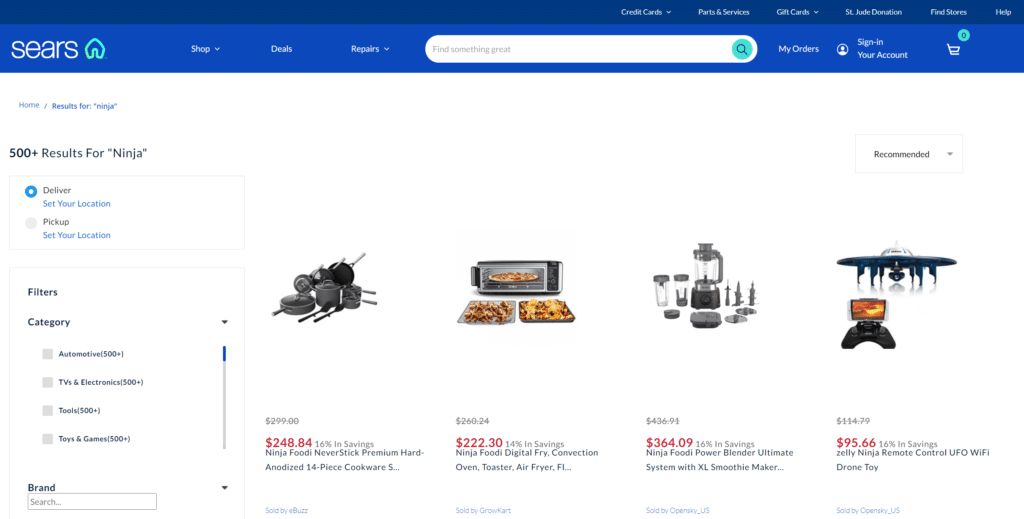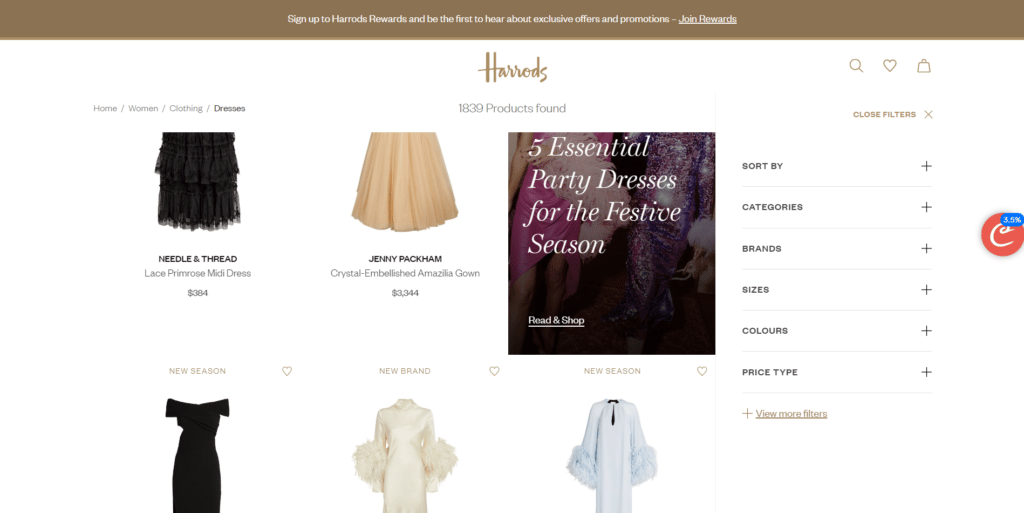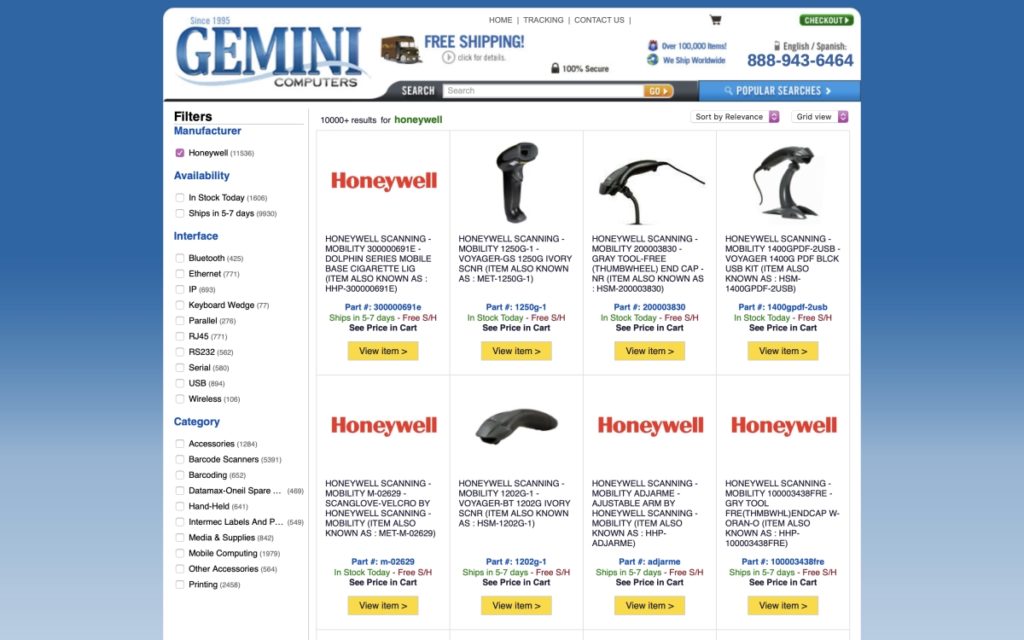Online shopping is one of the most popular pastimes for many people. With the rise of e-commerce, more and more people are turning to the Internet to shop for all kinds of goods. However, with such an abundance of available products, finding the exact item you’re looking for can be challenging. That’s why Shopify has developed a search and filter system to help customers find the products they need quickly and easily. In this guide, we’ll discuss what Shopify search filters are, their benefits, and how to use them to improve your online shopping experience.
What are Shopify search filters?

Shopify search filters are a powerful feature that lets customers quickly find the items they’re looking for. Using keywords and filters, customers can narrow their search results to find the exact product they need.
What is sorting and filtering on Shopify?
Sorting products arranges items on the collection page, while filtering allows customers to add and eliminate specific details like color and brand. Sorting helps customers find what they’re looking for quickly while filtering further refines their search results.
Benefits of using Shopify search filters
There are many benefits to using Shopify search filters. The most obvious benefit is the time saved. Additionally, Shopify filters can help customers find items they may not have known existed. Using the right combination of keywords and filters, customers can uncover products they would never have found otherwise.
Shopify filters can also help merchants improve the customer experience. By allowing customers to narrow their search results, merchants can make it easier for customers to find the items they’re looking for. This can lead to better customer satisfaction and increased sales.
How to use Shopify product filters to improve the online shopping experience
Using Shopify product filters to improve the online shopping experience is relatively straightforward. The first step is ensuring the filters are set up correctly. Shopify filters should be set up for all product types, including clothing, electronics, and other items. Additionally, merchants should ensure that the filters are correctly labeled and easily understood.
Once the filters are set up, merchants should ensure they are prominently displayed on the product pages. This will make it easier for customers to find and use the filters. Merchants should also ensure that they are easy to understand so that customers know exactly how to use them.

Finally, merchants should make sure that the filters are updated regularly. This will ensure that customers always have the most up-to-date information when searching for items. Additionally, merchants should ensure that the filters are optimized for mobile devices, as many customers will use their phones or tablets to shop.
How do Meta Fields Help in Customizing Filters?
By setting up meta field definitions, you can dramatically increase your Shopify store’s functionality. It provides business owners the option of adding standard and custom definitions on their site. With the meta-field definitions in play, Shopify merchants can generate filters for single-line text fields, number integers, and number decimals.
Best practices for using Shopify search filters
- Use clear and descriptive labels for your filters: Make sure that the labels you use for your filters are clear and easy to understand. This will help customers quickly understand what the filter does and how it can help them find what they’re looking for.
- Don’t overdo it: While filters can be a helpful tool for customers, it’s important not to overdo them. Too many filters can be overwhelming and make it harder for customers to find what they’re looking for. Stick to the most important filters and use them sparingly.
- Keep your filters up to date: Make sure to keep your filters up to date with your current product offerings. If you have filters that don’t have any matching products, it can be confusing for customers and may lead them to leave your site.
- Use tags to help with filtering: In addition to traditional filters, you can also use tags to help customers narrow down their search results. For example, you might use tags for things like “new arrivals” or “best sellers” to help customers find the most popular products on your site.
- Test and optimize your filters: As with any aspect of your online store, it’s important to continually test and optimize your filters to ensure they provide the best possible experience for your customers. Try different filter combinations and see how they impact your sales and customer engagement.
Tips for optimizing Shopify search filters
- Use a variety of filter options: This could include options like price, color, size, and material.
- Make sure filters are easy to access: Place them prominently on your store so customers can easily find them. Consider including them in the main navigation menu or at the top of the search results page.
- Use synonyms and related terms: In addition to the main terms you use for your filters, consider adding synonyms and related terms to help customers find what they’re looking for. For example, if you have a size filter with options for “small,” “medium,” and “large,” you might also include synonyms like “petite,” “medium,” and “plus size.”
- Use filters to highlight special offers: If you have sales or other special offers, consider using filters to help customers find them more easily. For example, you might create a filter for “on sale” or “new arrivals”.
- Use filter facets: The faceted search feature allows customers to apply multiple filters at once, making it easier to find exactly what they’re looking for. Consider using this feature to improve your store’s search and filtering experience.


By following these tips, you can optimize your Shopify search filters to provide a better shopping experience for your customers and drive more sales for your business.
How to test Shopify search filters
To ensure customers can find the products they’re looking for, it’s crucial to test the Shopify search filters. Here are some tips for testing Shopify search filters:
- Start by identifying the filters you want to test: Determine which filters are the most important for your business and focus on testing those first.
- Set up a control group: To accurately test the impact of your filters, you’ll need to compare them to a control group. This means creating a version of your store without any filters and using it as a baseline for comparison.
- Test different filter combinations: Once your control group is set up, try experimenting with varying filter combinations to see how they impact sales and customer engagement. Try adding new filters, removing existing ones, or rearranging the order in which they appear.
- Use analytics to track results: Use tools like Google Analytics and your store’s search analytics to track the performance of your filters and see how they impact your store’s metrics. Look for changes in metrics like average order value, conversion rate, and bounce rate to see how your filters are affecting customer behavior.
- Make adjustments based on your findings: Based on the results of your tests, make any necessary adjustments to your filters to optimize their performance. This might involve adding new filters, removing existing ones, or changing their placement in your store.
By regularly testing and optimizing your search filters, you can ensure that they provide the best possible experience for your customers and drive more sales for your business.
Troubleshooting Shopify search filters
When using Shopify search filters, it’s important to be aware of the potential issues that could arise. Here are some tips for troubleshooting Shopify search filters:
- Check for accuracy: To ensure customers can find the products they’re looking for, it’s essential to check the accuracy of the filters. This can be done by regularly reviewing the filters to ensure they are accurate and up-to-date.
- Use customer feedback: Customer feedback is an invaluable source of information for businesses. By gathering customer feedback through surveys and reviews, businesses can gain valuable insights into their customers’ needs and preferences. This can be used to improve the online shopping experience by offering more relevant products and services.
- Check the labels: To ensure customers can quickly and easily find the products they’re looking for, it’s important to check the labels of the filters. This can be done by reviewing the labels to ensure they are clear and concise and accurately describe the filter.
- Check for relevance: When creating filters, only use filters related to the products sold. This will help customers quickly find the products they’re looking for and improve the overall customer experience.
Conclusion
Effective search filters on your Shopify store are crucial for providing customers with a seamless and enjoyable shopping experience. By following the best practices outlined in this guide and continually testing and optimizing your filters, you can ensure that your store provides the best possible experience for your customers.
However, if you’re still struggling to get the desired results with your store’s built-in search and filter functionality, it may be worth considering a third-party solution like AddSearch.
AddSearch is a powerful search tool that can help you improve the search experience on your store and drive more sales. With features like faceted search, synonym support, and customizable search results, AddSearch can help you take your store’s search functionality to the next level.
By implementing AddSearch on your Shopify store, you can give your customers the best possible shopping experience and drive more sales for your business.









